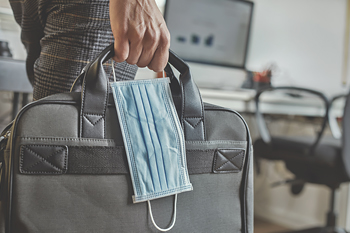Employment expert shares crucial advice on reopening and what employers must do to protect themselves, their staff, and their clients
 If your reopening is consistent with applicable state and local orders, you might assume that you can flip your ‘closed’ sign around and start embracing our new normal.
If your reopening is consistent with applicable state and local orders, you might assume that you can flip your ‘closed’ sign around and start embracing our new normal.
However, employment expert Rob Wilson says that employers need to consider more than just state/local guidelines before reopening.
“From putting recommended health and safety actions in place to implementing ongoing monitoring, getting back to work is going to look very different than before, and it’s going to require many workplace modifications,” says Wilson, who has helped guide numerous clients in their reopening procedures.
Here, the President of Employco USA, reveals his top tips for how employers can navigate working in the COVID-19 era:
Survey your employees: “One of our significant recommendations is for companies to survey their employees prior to returning – to get a better indication of who can/can’t return. This will help with social distancing plans if you have less people to plan for (who are returning to the office).”
Identify hazards: “Supervisors should perform a comprehensive walk-through of their workplaces and flag high-risk areas. This needs to include evaluating HVAC systems, reviewing cleaning practices, and stocking up on needed supplies, including PPE for staff and potentially clients,” says Wilson.
Create social distancing plan: “Consider how you can create the greatest amount of distance between employees. This may mean changing employee travel patterns (creating one-way hallways, moving desks, rearranging the copy room, etc.), or creating staggered shifts and breaks.
You also need to look at high-traffic areas like the elevators and meeting rooms. High-touch areas will need to be cleaned frequently, and you may want to block off every other chair in the conference room to keep space between your staff.”
Consider the needs of your staff. “You may want to implement hazard pay for employees who are high-risk. You may also want to consider allowing flexibility as far as working from home or modifying schedules.”
Create a plan for COVID-19 positive cases. “Don’t wait until you have a positive case in your workplace to begin implementing workplace guidelines. Make a COVID-19 plan right now. What will you do if a worker tests positive? How will you clean the workplace and notify other employees and possibly your clients?
You should also consider how you will handle employees who present with increased temperatures. Many companies are planning to take temperatures of workers as they enter the building, but make sure you have firm guidelines for what is considered a high-temp and how you will handle this situation. Also note that some conditions like rheumatoid arthritis, cancer, and lupus can cause elevated temperatures, so you will need HIPAA-compliant procedures that will take this into account.”
Monitor employees’ health and exposure risk on a daily basis. “Have your employees sign a quick form each day which measures their exposure risk and enquires about any travel history, such as whether they have experienced a high temperature recently (or any other COVID-19 symptoms), whether they have been around anyone who has COVID-19 or suspected to have COVID-19, or whether they have traveled out of the state or out of the country in the past 30 days,” says Wilson.
For more on this topic, please contact Rob Wilson at rwilson@thewilsoncompanies.com.